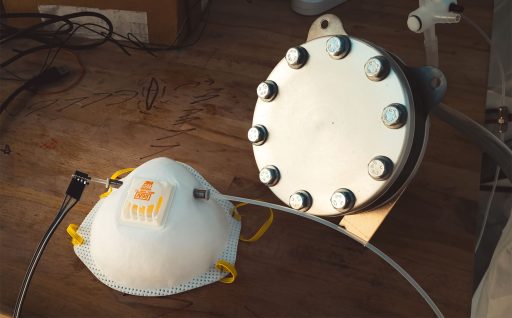Re-engineered N95 face masks counteract oxygen deficiencies

For many people in the United States, cloth masks and N95 respirators are accessories not commonly used in day-to-day life. In the midst of the COVID-19 pandemic, many people are finding that the use of a mask or respirator is an uncomfortable experience.
However, two mechanical engineers from Stanford are attempting to make the use of the N95 respirators a bit easier and more comfortable. John Xu and Friedrech “Fritz” Prinz have re-engineered the N95 respirator to counteract oxygen deficiencies that arise from their use.
In a press statement, Xu said, “Through the COVID-19 crisis, many have become familiar with N95 masks, which filter out 95 percent or more of small particulate matter from the air including the virus. But in filtering those particles, the mask also makes it harder to breathe. N95 masks are estimated to reduce oxygen intake by anywhere from 5 to 20 percent. That’s significant, even for a healthy person.”
To solve this problem, Xu and Prinz are working on what they call “oxygen enrichment.”
The two engineers are already familiar with attempting to achieve high levels of oxygen in a concentrated flow with their work on fuel cells for next-generation automobiles. In the case of the N95 respirators, Xu and Prinz are aiming to develop a portable device that can enrich oxygen from the surrounding air.
Xu and Prinz are currently experimenting with a few different ideas on how to achieve this goal. One is the concept of splitting water: When you run an electrical current through water, the additional electrons cause the water molecules to split back into pure oxygen and hydrogen atoms. The hydrogen can be used as fuel while the oxygen can recirculate through the mask.
The second idea moves oxygen-containing anions (negatively charged atoms) through a membrane to isolate oxygen on one side so that it can be directed back into the mask. Xu and Prinz currently have a working prototype that is composed of a box worn at the waist with a tube extending up toward the face mask.
“We are targeting this to anyone who has to wear a mask for the long term: first responders, doctors, nurses and even patients who don’t want to infect others,” Xu said. “In the near term, we hope to get these to healthcare workers as soon as possible.”
In the meantime, the use of the standard version of N95 respirators continues to be required for many American workers who are able to perform their duties during this pandemic.
